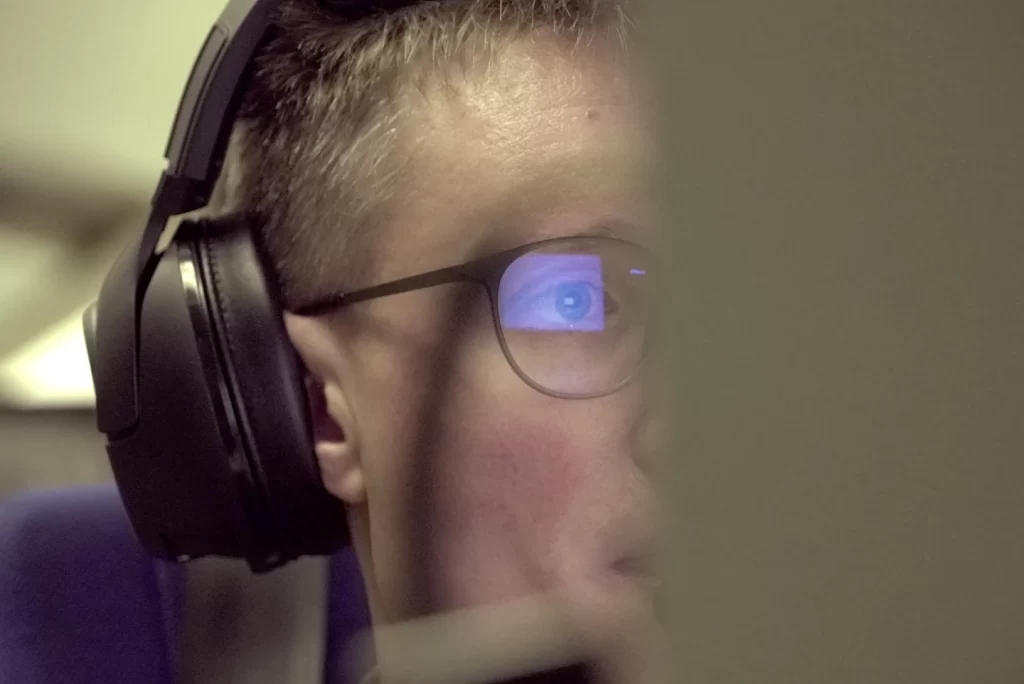
ABOARD A FRENCH AIR FORCE AWACS — Off in the distance, Ukraine, fighting for its survival. Seen from up here, in the cockpit of a French air force surveillance plane flying over neighboring Romania, the snow-dusted landscapes look deceptively peaceful.
The dead from Russia’s war, the shattered Ukrainian towns and mangled battlefields, aren’t visible to the naked eye through the clouds.
But French military technicians riding farther back in the aircraft, monitoring screens that display the word “secret” when idle, have a far more penetrating view. With a powerful radar that rotates six times every minute on the fuselage and a bellyful of surveillance gear, the plane can spot missile launches, airborne bombing runs and other military activity in the conflict.
Circling on auto-pilot at 34,000 feet (10 kilometers), the plane with a proud cockerel painted on its tail fed intelligence in real time to ground-based commanders.
The plane’s sustained presence high above eastern Romania — seeing and also being seen by Russian forces — signaled how intensely NATO is watching its borders and Russia, ready if necessary to act should Russian aggression threaten to extend beyond Ukraine.
Regular surveillance flights, together with fighter patrols, ground-based radar, missile batteries and other hardware at NATO’s disposal, form what the commander of France’s AWACS squadron described as “a shield” against any potential spill-over.
The “ultimate goal is, of course, no conflict and deterrence,” said the commander, a lieutenant colonel named Richard. Because of French security concerns, the AP was only able to identify him and other military personnel by their ranks and first names.
“We need to show that we have the shield, show to the other countries that NATO is collective defense,” he continued. “We have the ability to detect everywhere. And we are not here for a conflict. We are here to show that we are present and ready.”
E-3s are modified Boeing 707s. The 707 first flew in 1957 but stopped carrying passengers commercially in 2013, so E-3s are also flying examples of aviation history.
“We can detect aircraft, we can detect UAVs, we can detect missiles and we can detect ships. That’s true, for sure, in Ukraine, especially when we are at the border,” Lt. Col. Richard said.
As the plane loitered and scanned, the crew detected a distant Russian AWACS above the Sea of Azov, many hundreds of kilometers away on the Crimean Peninsula’s eastern side. The Russian aircraft also seemingly spotted the French AWACS: Sensors along the fuselage picked up Russian radar signals.
HAWK-EYED AWACS ON CALL TO SAFEGUARD THE OLYMPICS
NATO also has its own fleet of 14 AWACS, also E-3s. They can detect low-flying targets within 400 kilometers (250 miles) and higher-flying targets another 120 kilometers (75 miles) beyond that, the alliance says. It says one AWACS can surveil an area the size of Poland; three can cover all of central Europe.
Able to fly for 12 hours without refueling, French AWACS aren’t limited to surveillance, communications and air-traffic control missions for NATO. They expect to be deployed as part of the massive security operation for the Paris Olympics, providing additional radar surveillance with what Lt. Col. Richard called their “God’s-eye view.”
In 2022, a Russian fighter jet released a missile near a British air force RC-135 Rivet Joint surveillance aircraft that was flying in international airspace over the Black Sea, Britain’s government said. The U.S. government released video in March 2023 of a Russian fighter jet dumping fuel on a U.S. Air Force surveillance drone. The drone crashed into the Black Sea.
Rivet Joints are particularly capable spy planes, and Russian authorities “really hate” their ability to snoop on the Ukraine war, said Justin Bronk, a researcher at the Royal United Services Institute defense think tank in London.
As well as gathering “real-time intelligence that theoretically could be shared with Ukrainian partners,” the planes also furnish “fantastic” insight about “how Russian forces actually operate in a real war,” Bronk said in a phone interview.




